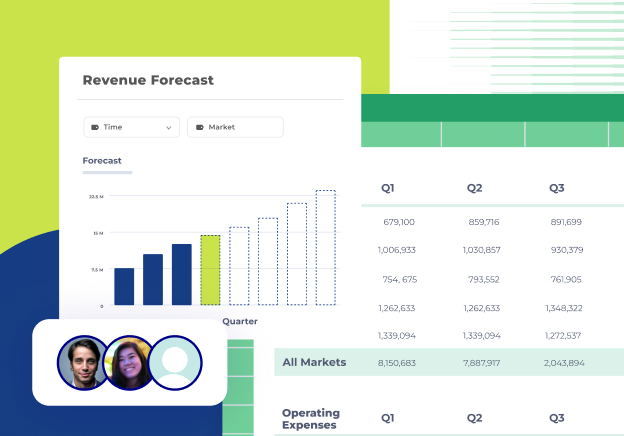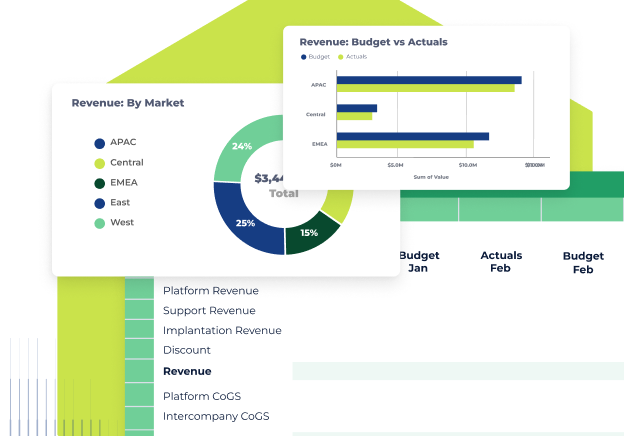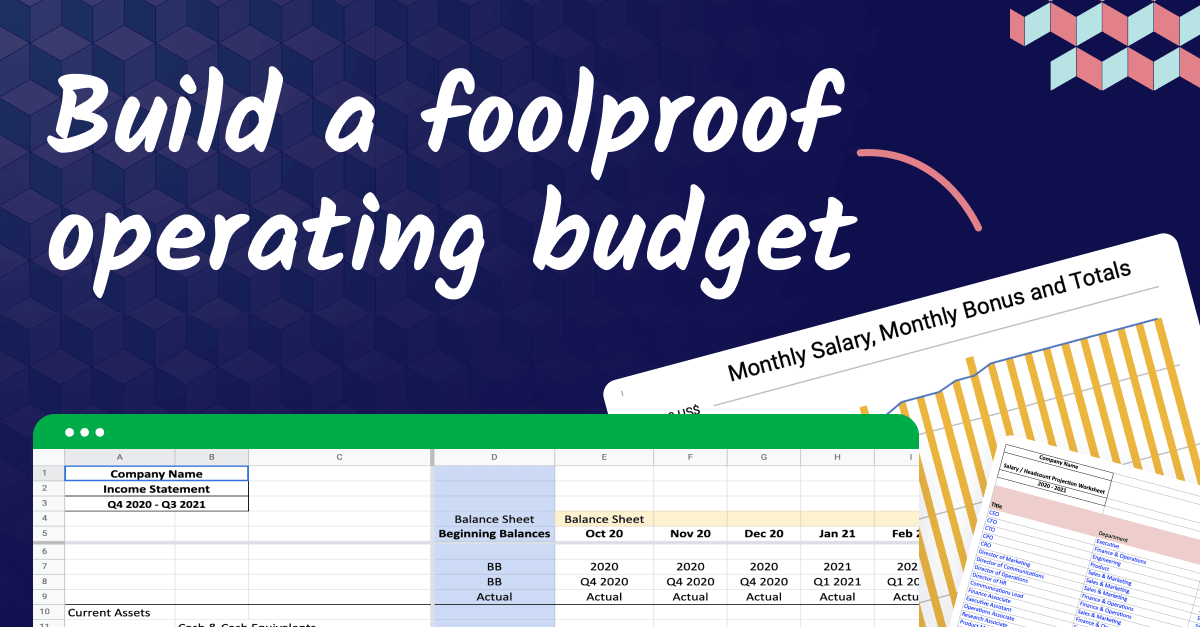The key difference between CapEx and OpEx
The main difference between CapEx and OpEx is that CapEx involves long-term investments in physical assets, which are capitalized and depreciated over time. OpEx covers daily operational costs and is expensed immediately.
On cash flow statements, CapEx is listed as property, plant, and equipment (PP&E) under investing activities, while operating expenditures are filed under operating activities.
As a depreciable asset, CapEx spreads the tax deduction over its useful life, reducing taxable income incrementally. OpEx provides more immediate tax, as it’s fully deductible in the year it is incurred.
What is a capital expenditure?
A capital expenditure is a payment made to acquire a good or service expected to have a lasting benefit. CapEx purchases are typically big-ticket items with high initial costs. However, they improve the functioning of a business in the long run.
CapEx is all about investment and return—putting money into the future growth of a business to generate value over time.
What types of expenses are classed as capital expenditures?
Typical examples of capital expenditures include:
- Tangible or fixed assets like machinery, vehicles, or equipment
- Building construction or renovation
- Intangible assets like patents or trademarks
- Upgrades to existing technology and software
- Research and development
CapEx formula and calculation
To calculate your capital expenditures, subtract the current period PP&E (Property, Plant, and Equipment) from the prior period PP&E and add on the depreciation.
The CapEx formula is:
CapEx = (PP&E (prior period) - PP&E (current period)) + Depreciation (current period)
To save you time, here’s a free template you can download to calculate the associated spend and depreciation for a capital budget or forecast.
Pros of CapEx
The pros of capital expenditure all revolve around the benefits of long-term thinking and planning. Theses include:
- Long-term asset acquisition: Supports business by contributing to sustained growth and stability (e.g., buildings and machinery)
- Improved efficiency and productivity: New technology and equipment offer better performance and reliability
- Competitive advantages: Major investments attract more customers and increase market share
- Increased value and revenue potential: Increased operational capacity meets higher demand
- Tax benefits through depreciation: Gradually reduces taxable income rather than getting taxed the same amount each year

Common challenges businesses face in managing OpEx
While the benefits of CapEx primarily revolve around long-term planning, the main challenge lies in accurately predicting budgets years into the future.
Let’s explore these challenges in more detail:
- Budget allocation constraints: Designating the proper funding for large capital expense projects can often be challenging, especially when a business is facing multiple competing priorities. Postponement of essential projects is sometimes required when working with a limited budget.
- Regulatory compliance: Adhering to regulatory mandates, especially in industries with strict standards, can pose complicated challenges for a business. Conforming to these guidelines is a necessary condition to safeguard a business against legal ramifications and additional burdens of penalty expenses in the future.
- Risk management: The risk of potential cost overruns and delays can arise from inaccuracies in cost estimation or imprecise business forecasting. Taking a proactive approach to mitigate these setbacks shields a company from unwarranted disruptions that can significantly impact project timelines.
- Long-term impact: Planning for scalability and anticipating changes in technology that could impact the relevance of existing assets are critical factors that should be addressed when annual planning for any type of long-term capital expenditures.
- ROI measurement: Capital projects often involve numerous variables, making it challenging to isolate the outcome of the investment on financial returns. Addressing these challenges requires a comprehensive and flexible approach to ROI measurement, incorporating sensitivity analyses, scenario planning, and a recognition of the dynamic nature of business environments.
What is an operating expense?
Operating expenditures cover the ordinary and customary costs that keep the business running smoothly. They’re necessary for a business to operate but don't create value or generate revenue for the business in the long term.
Operating expenses are an essential part of the immediate strategy of a company. CapEx and OpEx work together to stabilize the business as it grows.
What expense categories are classed as operating expenses?
Much like a budget that runs a personal household, operating expenses provide the means to run your physical business location and maintain its processes.
Examples of operating costs include:
- Property costs (rent, payments, etc).
- Property taxes
- Salaries
- Utilities
- Administrative costs
- Insurance
OpEx formula and calculation
Operating expenses are relatively straightforward, day-to-day considerations for a company, and the formula is relatively simple.
OpEx = COGS + Operating expenses
- In this formula, COGS (cost of goods sold) refers to everything involved in the production of goods sold by your company.
- Operating expenses include everything else needed to run your business, such as rent, utilities, salaries, and administrative costs.
For example, if the COGS equaled $50,000 over a given period and the other operating expenses were $30,000, the OpEx is $80,000.
OpEx = $50,000 + $30,000
OpEx = $80,000
Pros of OpEx
Unlike capital expenditures, which can involve significant, long-term investments, OpEx allows companies to be more flexible in adapting to changing market conditions and more immediate business needs.
Here, we’re going to look at why OpEx is an essential aspect of effective financial management.
- The greater flexibility that OpEx offers allows businesses to adjust their spending based on current operational needs. Without having to commit large amounts of capital, they can respond quickly to unexpected challenges.
- Immediate recognition on your income statement means you can fully expense OpEx in the period it is incurred, simplifying many aspects of financial planning and analysis (FP&A).
- OpEx is fully tax-deductible in the same year, providing significant, predictable tax relief and improving cash flow.
- Budgeting is simpler, especially for recurring expenses such as salaries and rent. This allows you to predict and plan more accurately.
- Operational expenditure can be adjusted as needed, so you can better control costs and manage operational efficiency.
Common challenges businesses face in managing OpEx
The flexibility and predictability of operating expenses brings about its own drawbacks.
Some challenges include:
- Cost control: Many day-to-day operational costs are variable and depend on factors such as production levels or sales volume. Unexpected increases in these expenses can have a direct impact on a company’s profit margins.
- Market fluctuations: Businesses are often exposed to market fluctuations, and operational expenses can be affected by changes in commodity prices, inflation, increased market competition, and other economic factors.
- Talent management: Attracting and retaining skilled employees without overspending on salaries and benefits is a balance that all companies are challenged with.
- Workforce costs: These costs are a significant component of OpEx and should align with your budget to ensure a sustainable, competitive edge in talent acquisition.
- Technology costs: The fast-paced evolution of technology poses a challenge as businesses strive to stay current while staying within budget. Determining the optimal timing for technology upgrades and ensuring that investments remain relevant in the long term requires strategic foresight.

CapEx vs. OpEx: The main differences
Capital expenses are the heavy hitters of your budget, whereas capital expenditures are the regular, predictable expenses that keep the lights on.
1. Types of investments
Capital expenditures include large purchases, such as new equipment or facility building, that mean getting widespread buy-in. This type of expenditure is usually done once, and the cost affects the company's bottom line over a long period of time.
Operating expenses are costs that are incurred on a regular basis. These include things like salaries and office supplies, which are necessary for the ordinary operations of the business. Operating expenses can be more easily controlled and managed than capital expenditures.
Capital expenditures involve significant investments that require a company to commit resources to something that will generate revenue in the future. Operating expenses involve smaller costs to support existing activities and don’t create value or generate revenue for the business in the long term.
Some expenses can be somewhat subjective. For example, research and development to develop a product could be paid for within a year. However, it is an investment aimed at generating more revenue in the future and is therefore a capital expense.
On the other hand, a salary pays for an employee’s services which is necessary for the company to continue operating. While that individual’s progress is a benefit to the company in the long term, it’s not classified as a capital expense.
2. How to record CapEx and OpEx on financial statements
Both capital expenditures and operating expenses appear in different lines of your financial reporting.
As a quick overview, this is where you’ll find capital expenditures on your financial statements:
- Capital expenditures are recorded under the property, plant, and equipment (PP&E) line on the balance sheet as long-term assets, and the purchase amount is spread out over the useful life of an existing asset.
- On the company’s income statement, CapEx is usually depreciated or amortized over its useful life. This is done so that expenses in one year aren't misrepresented as all coming from one purchase.
- CapEx appears on the cash flow statement under investing activities when funds are spent on long-term assets.
Operating expenses appear as follows on your financial statements:
- On the balance sheet, operating expenses can also be listed as prepaid expenses or accounts payable in some instances.
- Operating expenses are recorded on the income statement as part of the cost of goods sold (COGS).
- On the cash flow statement, operating expenses are listed under operating activities as they are paid out.
The accounting treatment for capital expenditures (CapEx) and operating expenses (OpEx) differs in terms of how they are recorded and reported on a company's financial statements.
3. Tax differences between capital expenditures versus operating expenses
Because CapEx and OpEx involve different kinds of spending, the way they depreciate varies.
Capital expenditures are depreciated over time to spread out the tax deduction you can claim for an asset's useful life. Instead of claiming the entire cost of a large purchase in the year it is made, companies can spread the cost out into smaller amounts over several years to reduce your taxable income in any given year.
Operating expenses are usually deductible in the year they're incurred. So, for instance, if you buy office supplies, hire an employee, or pay rent in any given year, those expenses can be deducted from that year’s taxable income. This means that you may be able to deduct all of the cost of the expense in one go and receive the future benefits immediately, as opposed to having to spread it over multiple years with capital expenditures.
Understanding the tax implications of CapEx and OpEx is crucial for effective financial planning, as it influences the timing of tax deductions and can impact a company's overall tax liability.
(We know you know this, but the information above is for informational purposes only. It should not be considered tax advice. For qualified tax advice, see your finance department, CPA, or another qualified tax advisor for information on your tax situation.)
4. Standard depreciation methods for capital expenditures
Companies may use several widely accepted depreciation methods to calculate the declining value of their CapEx assets over time. The most common ones include Straight Line, Double Declining Balance Method, and Units of Production.
Companies decide which method best suits their needs for tax purposes while considering the asset's useful life and the business cycle. Choosing one over the other affects how quickly deductions can be taken for taxes, so it’s essential to remember how your selection affects cash flow in the future.
- Straight-line depreciation: The simplest method of depreciation, spreads out the cost evenly over the asset's useful life. Businesses like straight-line because it’s simple to calculate and easy to understand. It requires no calculations beyond the cost of the asset and its useful life span. It simplifies filing taxes as deductions can be taken steadily over time, allowing for smoother cash flow throughout the asset's lifespan. The straight-line method allows businesses to better predict future tax savings and budget accordingly.
- Double declining balance: This method accelerates depreciation by taking a larger deduction in earlier years and gradually more minor deductions each year thereafter. This method is also helpful for businesses that rely heavily on more significant cash inflows from investments and prefer to defer taxes to a later accounting period. It works best for companies that need to quickly depreciate their assets and can take advantage of larger deductions in the short term.
- Units of production method: This method takes into account how often an asset is used or its production output to calculate its depreciation. This method works best for assets used frequently or at regular intervals. This method lets you base depreciation on the number of times an asset is used or the volume it produces rather than a set timeline for depreciation. This allows companies to accurately know what percentage of value to reduce from an asset and better plan for tax deductions.
By using the units of production method, businesses can accurately calculate depreciation expenses and save money in taxes. It’s important to note that if you sell an asset before its total depreciation, you may have to recapture some depreciation as taxable income.

5. How CapEx and OpEx affect cash flow
Monitoring cash flow and cash ratios is an important component of balancing spending against return.
CapEx projects can be costly, but those investments often significantly improve a company's business operations and productivity. This can result in an increase in cash flow by reducing costs and boosting production and revenue.
For example, if a business invests in new technology that automates specific processes, it could reduce labor costs and increase operational efficiency over time. However, there may be a period when these investments impact cash flow due to the cost associated with them.
(To calculate your capital expense numbers, check out our full article on CapEx and download our free Excel template.)
Operational expenditures, such as rent, payroll, inventory, and other overhead costs significantly impact a company's cash flow.
These costs may be necessary for maintaining and operating the business but can also limit cash resources.
An effective cash flow management strategy should balance keeping things running and growth on the front burner.
Operational expenses should be closely monitored to ensure you’re not blowing the budget in the short term. This is especially true when using credit lines or outside capital is in the mix.
(For a simple way to check the strength of your liquidity, learn how to use the quick ratio with our step-by-step guide.)
6. Business benefits of CapEx vs. OpEx
Although both CapEx and OpEx are integral to the lifecycle of any business, they each provide different benefits.
CapEx
- Long-term asset acquisition: Capital Expenditures (CapEx) allow businesses to acquire significant assets like buildings, machinery, and technology, which support long-term growth and stability. These investments boost productive capacity, providing lasting value and potential for increased revenue over time.
- Improved efficiency and productivity: Investing in new equipment and technology through CapEx can lead to greater efficiency and productivity. Modern assets often offer better performance and reliability, reducing downtime and operational costs, ultimately improving overall business performance.
- Competitive advantage: By continually upgrading and investing in high-quality assets, companies can maintain or gain a competitive edge. Staying ahead with the latest technology and infrastructure attracts more customers, increases market share, and positions the company as a leader in its industry.
- Increased value and revenue potential: Capital investments often lead to increased operational capacity and improved product or service quality. This can result in higher revenue potential as the company meets higher demand and delivers superior offerings to the market.
- Tax benefits through depreciation: CapEx provides tax benefits through depreciation. The cost of capital assets can be spread over their useful life, reducing taxable income gradually. This offers financial relief over several years, smoothing out the impact of large expenditures on the company's financials.
OpEx
- Flexibility: Operating expenses (OpEx) provide greater flexibility compared to CapEx. Businesses can adjust their spending based on current operational needs without committing large amounts of capital upfront. This adaptability helps companies respond quickly to market changes and unexpected challenges.
- Immediate expense recognition: OpEx allows for immediate expense recognition on the income statement. Unlike CapEx, which is capitalized and depreciated over time, operating expenses are fully expensed in the period they are incurred. This simplifies accounting and provides a clear picture of the company’s current financial performance.
- Tax deductibility: One of the main advantages of OpEx is that these expenses are fully tax-deductible in the year they are incurred. This can provide significant tax relief and improve the company's cash flow by reducing taxable income in the short term.
- Simplicity in budgeting: Budgeting for OpEx is generally simpler and more straightforward than for CapEx. Since operating expenses recur regularly, businesses can predict and plan for these costs with greater accuracy. This helps in maintaining a stable financial outlook and efficient cash flow management.
- Easier adjustments to business needs: OpEx expenditures can be easily adjusted based on business performance and operational needs. Companies can increase or decrease their operating expenses as needed, allowing for more dynamic and responsive financial management. This makes it easier to manage operational efficiency and cost control.
CapEx and OpEx examples
The best way to understand the difference between CapEx and OpEx is through practical examples. Here, we’re going to look at examples of each in the context of various industries.
Capital expenditure industry examples
Capital expenditures vary across industries, reflecting the specific needs and nature of each sector. Below are some industry-specific examples:
Manufacturing industry
- Machinery and equipment: Purchasing and installing new manufacturing machinery or equipment to improve production efficiency.
- Factory infrastructure: Building or expanding manufacturing facilities, including construction and renovation costs.
SaaS industry
- Software development and enhancement: Developing and improving software features to retain and attract new users.
- Security and compliance measures: Creating advanced security protocols, conducting regular audits, and ensuring adherence to industry regulations.
Real estate
- Property acquisition: Purchasing land or properties for real estate development.
- Construction projects: Upgrading and renovating existing properties to enhance their market value or meet changing demands.
Healthcare industry
- Medical equipment: Acquisition of advanced medical devices and diagnostic equipment.
- Facility expansion: Constructing new hospitals or expanding existing healthcare facilities.
Operational expenditure industry examples
Operating expenses, or OpEx, vary across industries. Let's take a look at a few examples:
Retail industry
- Inventory costs: Holding and managing inventory, including the cost of storage and insurance.
- Employee salaries: Wages for retail staff.
Food service industry
- Raw materials and ingredients: Costs associated with purchasing food items and beverages served in the establishment.
- Rent or lease payments: Costs for using the physical space for the restaurant.
Hospitality industry
- Staffing costs: Salaries for hotel staff, including housekeeping, front desk, and management.
- Utilities and maintenance: Operational costs to keep the property running smoothly.
The bottom line on OpEx vs CapEx
Now you know all about the difference between CapEx vs. OpEx, you can face your financial statements with more confidence, accuracy, and predictability.
For a quicker and easier way to pull your actual CapEx and OpEx into Excel so that you can put your knowledge into actionable forecasts, consider Cube.
Cube is the world's first spreadsheet-native FP&A platform that natively integrates with your ERP and Excel (and Google Sheets). Let Cube handle all the data drudgery---cleansing, checking, formatting, and more---so you can focus on the analysis and modeling.
Click the banner below to request a free demo of Cube.



.png)









.png)
.png)
.png)




.webp)

.webp)